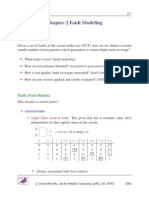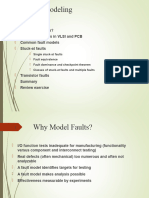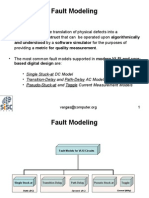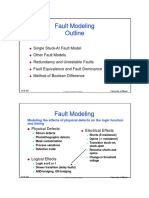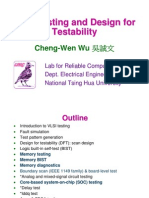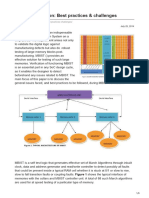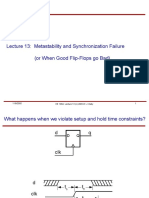0% found this document useful (0 votes)
85 views53 pagesCh3.fault Modeling
This document discusses fault modeling for testing digital circuits. It introduces common fault models including stuck-at faults and delay faults. Stuck-at faults assume a line is permanently stuck at 0 or 1, while delay faults model extra delays in signal transitions. Transition faults and path delay faults are two types of delay fault models. Transition faults affect one signal's rise or fall time, while path delay faults target specific signal propagation paths. Fault modeling lays the foundation for structural test methods to evaluate test quality and generate tests.
Uploaded by
Roshan RajuCopyright
© © All Rights Reserved
We take content rights seriously. If you suspect this is your content, claim it here.
Available Formats
Download as PDF, TXT or read online on Scribd
0% found this document useful (0 votes)
85 views53 pagesCh3.fault Modeling
This document discusses fault modeling for testing digital circuits. It introduces common fault models including stuck-at faults and delay faults. Stuck-at faults assume a line is permanently stuck at 0 or 1, while delay faults model extra delays in signal transitions. Transition faults and path delay faults are two types of delay fault models. Transition faults affect one signal's rise or fall time, while path delay faults target specific signal propagation paths. Fault modeling lays the foundation for structural test methods to evaluate test quality and generate tests.
Uploaded by
Roshan RajuCopyright
© © All Rights Reserved
We take content rights seriously. If you suspect this is your content, claim it here.
Available Formats
Download as PDF, TXT or read online on Scribd
/ 53






